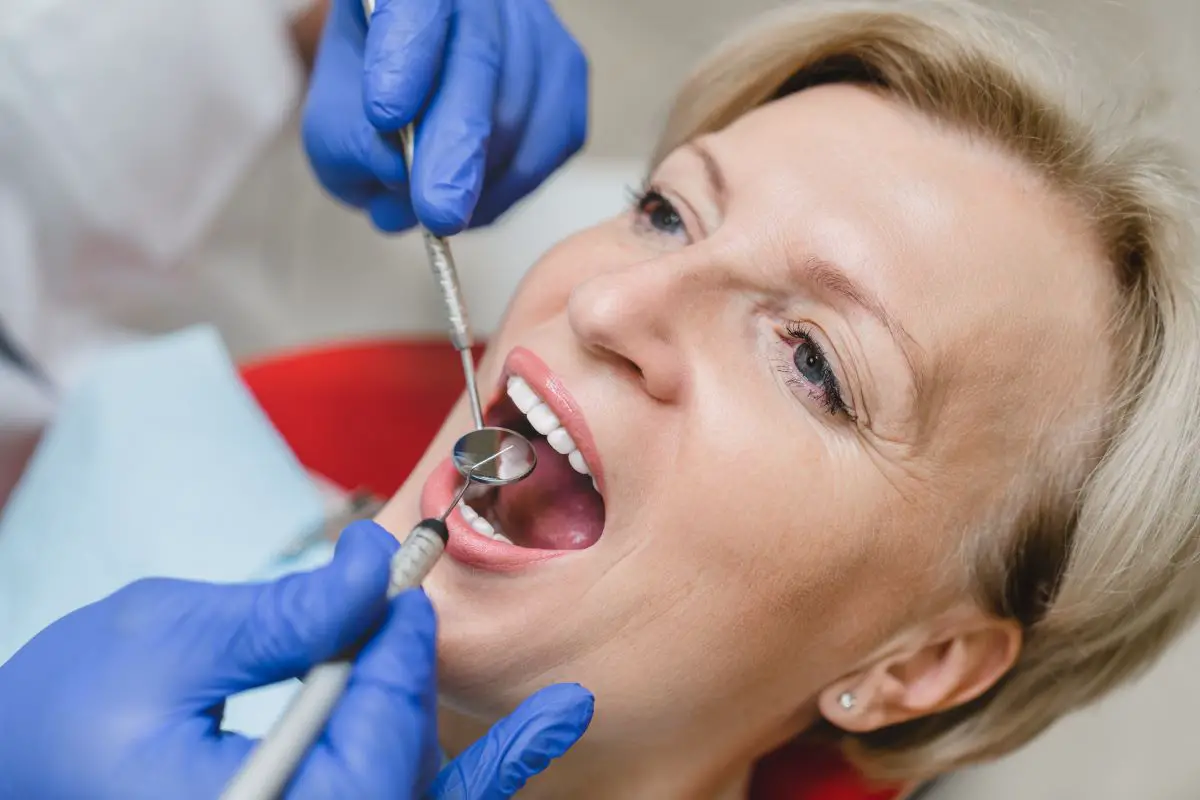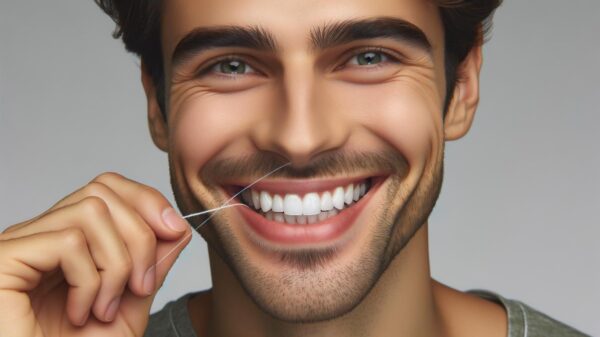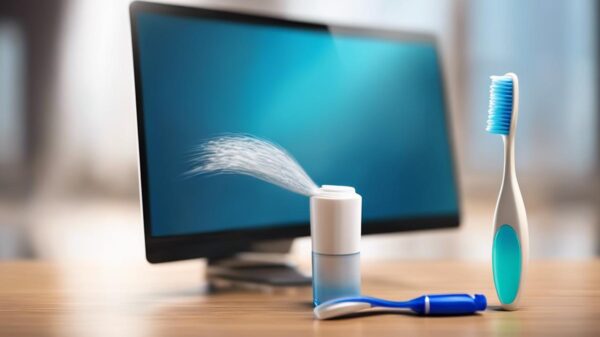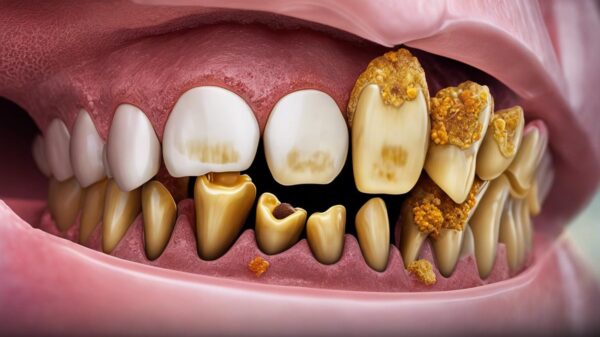Can Gum Disease Be Cured?
Gum Disease is a very unique disease. Most of the time people do not even know that they have it until it is too late. At this point, you have to repair the teeth.
The big question is can gum disease be cured? The answer is yes. You need to remove the harmful bacteria from your mouth and let your gums heal. You also need to know what gum disease is helps with prevention. Further on down in the article you will read more about the definition.
Gum disease can be devastating to your mouth if ignored. If this disease is not cured then it can cause teeth to fall out. So now that you have been warned you need to know if gum disease can be cured. The answer again is yes although it’s going to take a lot of work on your part as well as some expense.
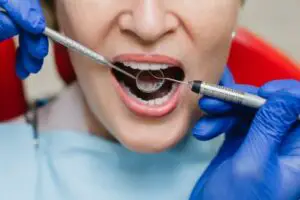 What is Gum Disease?
What is Gum Disease?
Gum diseases, also known as periodontal disease or periodontitis, are caused by infections and inflammation of the gums and bones that surround and support the teeth.
The gums can become swollen and red in the early stage of gum disease, known as gingivitis. The tissue supporting adjacent teeth may be lost in its more severe form leading to tooth loss.
In its early stage, gum disease is reversible. In the later stages of gum disease, you will have to pay a lot more money to a dentist to replace any teeth that may have been lost due to this disease. Now that you know what the disease is and how it can be cured, let’s take a look at how you can prevent it in the future.
What Causes Gum Disease?
Gum disease is a stealthy illness because it seldom causes pain, so you may never realize you have it. Plaque is what causes gum disease: this is how gum disease develops. Bacteria and food waste accumulate when you don’t clean your teeth thoroughly.
The bacteria grow stronger and mature into more complex organisms, creating higher-quality plaque. This plaque builds up on your teeth and gums, destroying the tissue around them. This turns into tartar, which is even stronger and harder to remove.
Tarter can be stronger than cement. The longer you wait on getting removed the harder it will be to remove.
Gum Inflammation
This is a reaction to the body’s call to recruit molecules to get rid of bacteria. The mechanism is your body’s natural defense once bacteria is detected.
Once the inflammation has started, you need to reach out to your dentist. If the gum disease isn’t cured, you are at risk for bone loss. This can result in loose teeth and possible tooth loss.
Spreading Of The Bacteria
The bacteria spreads down the back of the tongue and into the throat, causing gum irritation. This results in gums becoming puffy, red, and swollen as a result of blood rushing to the gums to fight off infection.
In addition to this, to avoid the bacteria, the gum shifts away from the tooth to create a pocket. The space beneath your gum line is an ideal home for germs.
Underneath your teeth, there’s a pocket of dead space that enables germs to creep underneath and claim it. Because you can’t clean behind your teeth, the bacteria stay there and multiply, causing problems.
Imagine a battle between the immune system and germs as if it were a military operation, with the battleground being around the gums. As part of the fighting, some “friendly fire” destroys gum tissue.
Fibers that support the teeth, gums, and bone that supports the teeth can begin to get destroyed. The more bone is lost from the tooth, the looser it becomes; you wind up losing the tooth.
How To Cure Gum Disease?
Gum disease may be treated. It all comes down to getting rid of germs from your mouth and allowing the gums to recover fully. The first step in eliminating gum disease is to obtain adequate information so that you understand how to clean your teeth properly at home.
The way to do this is by using floss, brushing well with a toothbrush, and cleaning your teeth after every meal. If the problem continues, it’s time to see a professional dentist for help removing plaque under your gums.
Brush Your Teeth
It is recommended that you brush your teeth twice a day with an electric toothbrush. You must use the toothbrush in a specific manner, and it amazes me how many people do this incorrectly.
We always ask them to demonstrate how they clean their teeth, and invariably they have poor technique. People simply use the electric toothbrush as if it were a manual one. A good electric toothbrush will have an oscillating head that does not move linearly but back-and-forth motions.
 Floss
Floss
Clean between your teeth. This is an area that many people overlook. Interproximal brushes should be used at least once a day, and you should use the appropriate size.
It’s very easy to utilize the right size brush, which means you’re cleaning effectively. Your dentist or hygienist will advise you on the best size for your mouth.
Flossing every day is recommended. Floss comes in two varieties: traditional string floss and easy-to-use plastic pick with a small piece of floss on the end. The latest version of these products has a “curve” on one end so it will fit comfortably between the teeth.
Get Specific Dental Care
Remember, this is general advice. Because everyone’s teeth are different, it is essential to get specific care. The hygienist/dentist cannot clean your teeth every day, so you’re the one who has to maintain great oral hygiene.
If you implement the proper technique at home, this will help your gums improve. Gum disease is progressive so it’s best to treat it early. Otherwise, you may have lots of problems down the road.
Have a Professional Cleaning
The most important aspect is to get your teeth cleaned professionally. The gum disease must be diagnosed correctly. There are many different types of gum disease, and a plan of action must be created.
As you can’t clean underneath the pockets (as explained above), you will need professionals to clean them for you. This will not only remove the plaque and tartar but also add the antimicrobial rinse to fight off infection.
It is important to remember that gum disease is a serious condition that should be treated immediately. If you’re committed to your oral hygiene at home, then you can take control of your dental health to prevent problems from occurring in the first place.
How Can You Tell If You Have Gum Disease?
The following are some of the most frequent signs of gum disease. Do keep in mind that not all of these symptoms will show up until later stages:
Bleeding Gums
Healthy gums should not bleed. When there is blood, it usually indicates gum inflammation. This almost certainly implies some form of gum disease.
If you have gum disease, you will generally have symptoms of bleeding if you brush around the gums. If you don’t floss, the bleeding may not be as apparent because the bacteria have not spread to areas between the teeth.
Bad Breath
The number one cause of bad breath is gum disease. There will be a large number of nasty germs on your teeth, causing volatile sulfur compounds to be released – this smells terrible.
Loose Teeth
Losing teeth only happens in the late stages of gum disease. If you have noticed this, get to your dentist right away to stop your teeth from getting any looser.
Drifting of Teeth
This type of disease destroys the supporting structures of teeth, allowing them to move freely. Teeth will generally want to flare out, resulting in spaces in your smile and teeth that protrude.
Gum Recession
The gums will recede, revealing the root surface of your teeth. This is unattractive and may cause sensitive teeth that are more prone to decay and wear.
Gum Abscesses
If you have bad gum disease, however, this tends to happen all of the time. Abscesses can be painful and if they grow, they may cause significant problems not just in your mouth but also throughout your entire body.
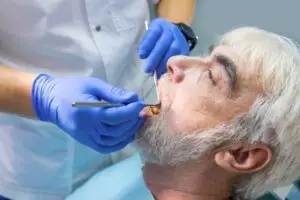 Commonality Of Gum Disease
Commonality Of Gum Disease
Gum disease affects a large number of people. It is one of the most prevalent diseases known to man. According to a recent study, almost 50% of the population in the United States suffers from some form of gum disease. The study found that 30% had moderate gum disease and 8% had severe periodontal diseases.
So, if you are seeing the signs of gum disease consult your local dentist.
Summary
Gum diseases are caused by infections and inflammation of the gums and bones that support the teeth. Gingivitis is a common early form in which the gums can become swollen and pink, with bleeding being possible. Periodontitis has more advanced symptoms, including bleeding gums and shifting teeth. Treatment varies depending on the type of gum disease you have.
This is not an exhaustive list of all possible symptoms, but it should give you a good idea of whether or not you need to take action. If you experience several of these serious signs, please see your dentist.



